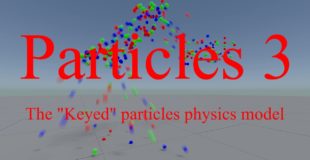https://i.ytimg.com/vi/KcipVt9J4U8/hqdefault.jpg
In this series of video tutorials we shed some light on some of the most important features of the very powerful Blender 3D’s particles system.
In this video tutorial I am explaining how the “Keyed” physics model for particles systems works.
source

15 responses to “Blender 3D : Particles:How the “Keyed” physics works”
Thank you. This video answered a lot of questions and I suddenly figured out how to do several different effects. I subscribed…
Really clear Peter. Thanks for that.
Excellent! Very good tutorial. Nicely done sir.
Always great tutorials, with a nice accent, thanks you !
A nicely done tutorial That's going to be fun to play with. Thanks!
Great tutorial; thanks.
Thank you Peter for the tutorial!
did you remove my comment?
Thanks for your great tutorials.
I am getting differents results with the "use timing" feature.
When I set the time for the second key(001) , the particles don't use this time to go from key to key001. They take the time from default to key001 minus time from default to key.
For example: Key=50 time from default to key= 50
but with time for key001 set to 55: time from key to key001 =5 and not 55.
Great tutorial very insightful
Very good tutorial and very well presented. Straight to the point, solid information.
Thank you som much Peter ! Your tutorials are gold 🙂
Thank you ! This was very instructive !
Thanks Peter. I haven't tried Keyed particles yet but I'll give them a go now.
Very good Explanation! Thanks! 🙂